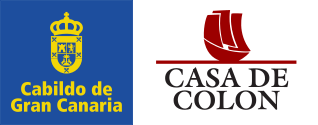Prospección arqueológica alrededor del Puerto de Abona y Atalayas de las montañas de Magua, del Puerto y de la Centinela (Arico, Tenerife, Islas Canarias) / Archaeological Survey around the Port of Abona and the watchtowers of Magua, Harbour and...
Palabras clave:
Tenerife, menceyato de Abona, guanches, prospección arqueológica, Puerto de Abona, Virgen de Candelaria, kingdom of Abona, Guanches, archaeological Survey, Port of Abona, Virgin of CandelariaResumen
El puerto de Abona, denominado puerto de los Abrigos de Abona en el siglo XVI, fue el más importante del Sur de Tenerife con el puerto de Los Cristianos, por el carácter complementario entre El Caletón, actual Porís de Abona, como protección para los vientos del noreste, y la playa Grande o del Faro para los vientos del sureste en invierno. El puerto estaba estrechamente vigilado por tres atalayas en sus cercanías, las montañas de Magua, del Puerto y de la Centinela. En las inmediaciones del puerto había, al igual que en el puerto del Socorro de Güímar, una cueva del mencey. En la playa se produjo la aparición de una pequeña imagen de la Virgen de Candelaria antes de la conquista, eligiéndose una cueva artificial excavada en toba volcánica o un abrigo natural como lugar de culto de la imagen. También existían mujeres dedicadas a su culto, las maguas o sacerdotisas, cuyo nombre conserva una de las montañas que servían de atalaya. La repetición de estos elementos sugiere que la elección del lugar de aparición de la imagen de la Virgen de Candelaria en Güímar no fue un caso excepcional entre los menceyatos de paces del Sur de Tenerife. El puerto, además, fue utilizado para desembarcar en el último episodio de la conquista de Tenerife en 1496.
The Port of Abona, called the Port of the Shelters of Abona in the sixteenth century, was the most important in the South of Tenerife with the Port of Los Cristianos (Christians Port), because the complementarity between the Caletón, current Poris de Abona, as protection for northeast winds and Grand Beach or Lighthouse Beach to the southeast winter winds. The port was closely guarded for three watchtowers nearby, the mountains of Magua, the Harbour and the Sentinel. In the vicinity of the port there was, as in the port of El Socorro (Rescue Port) of Güímar, a cave of the mencey or king. On the beach there was the appearance of a small image of the Virgin of Candelaria before the conquest, choosing an artificial cave dug in volcanic tuff or a natural shelter as a place of worship of the image. There were also women dedicated to its worship, the maguas or priestesses, whose name is preserved in one of the mountains that served as a watchtower. The repetition of these elements suggests that the choice of the place of appearance of the image of the Virgin of Candelaria at Guimar was not an exceptional case among peace kingdoms of South Tenerife. The port was used to land in the latest episode of the conquest of Tenerife in 1496.










